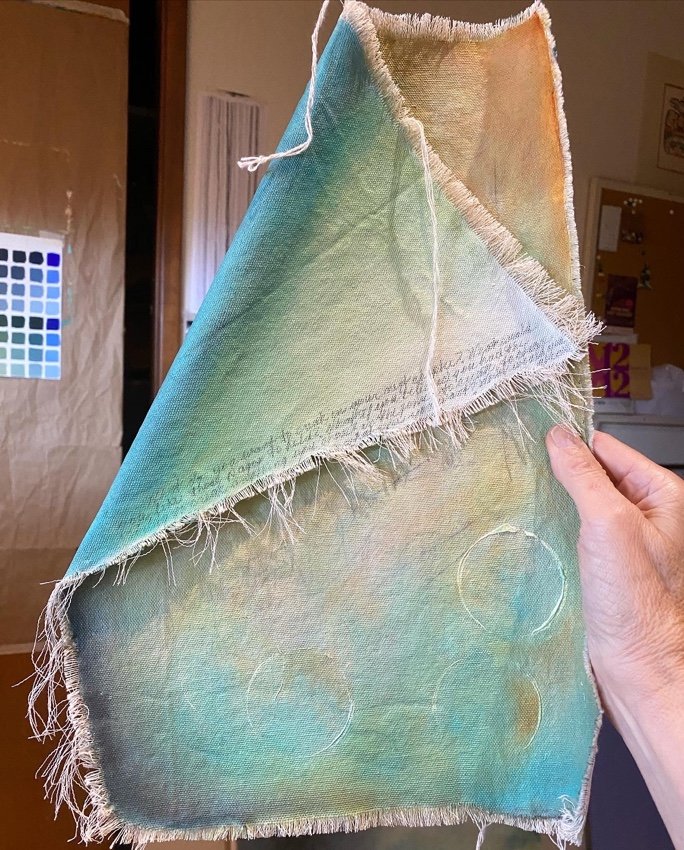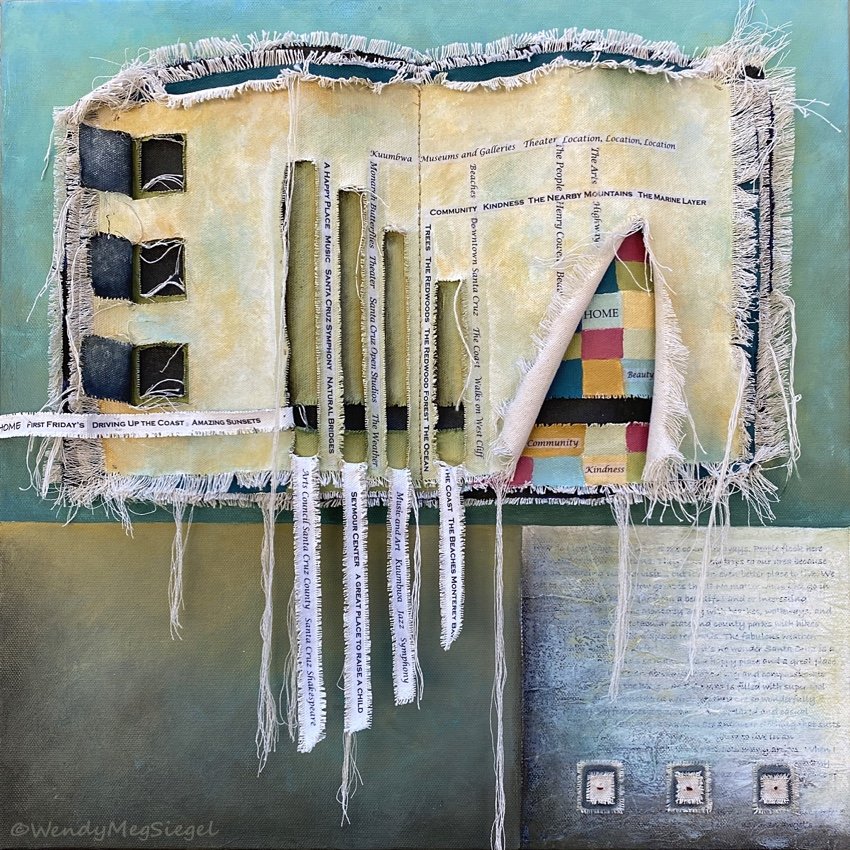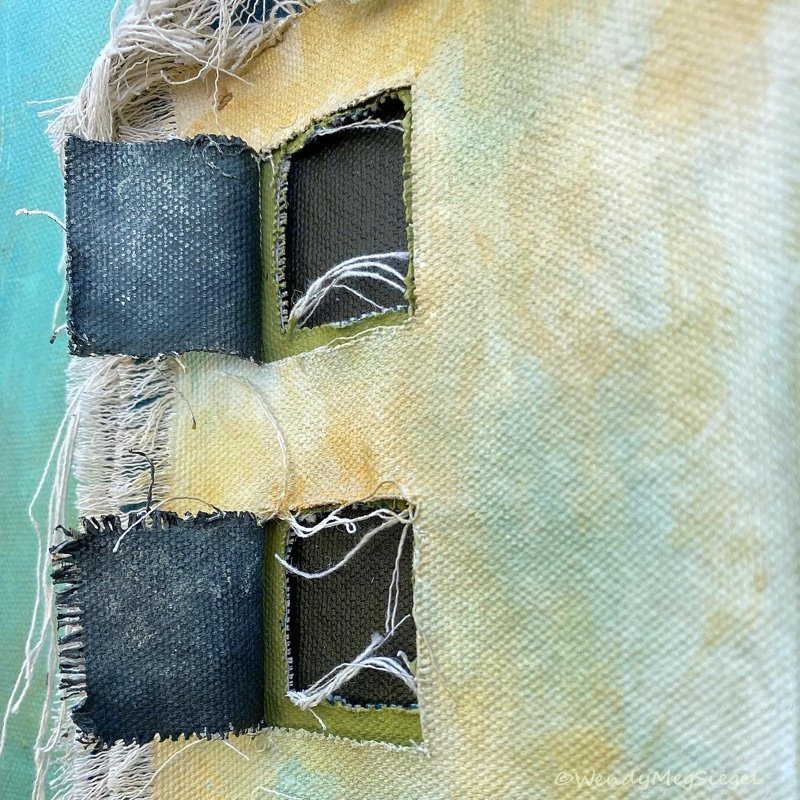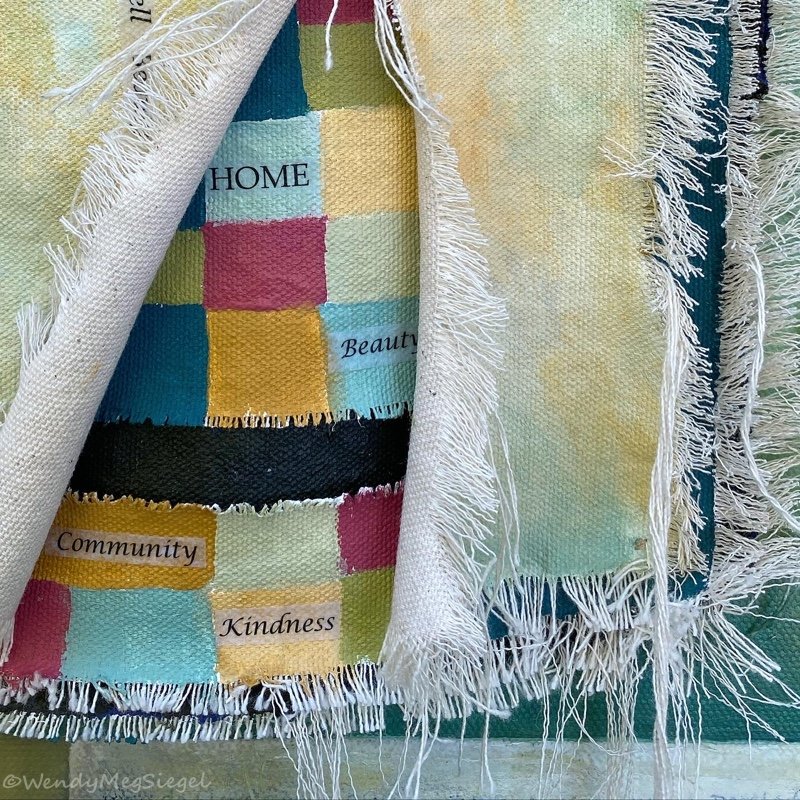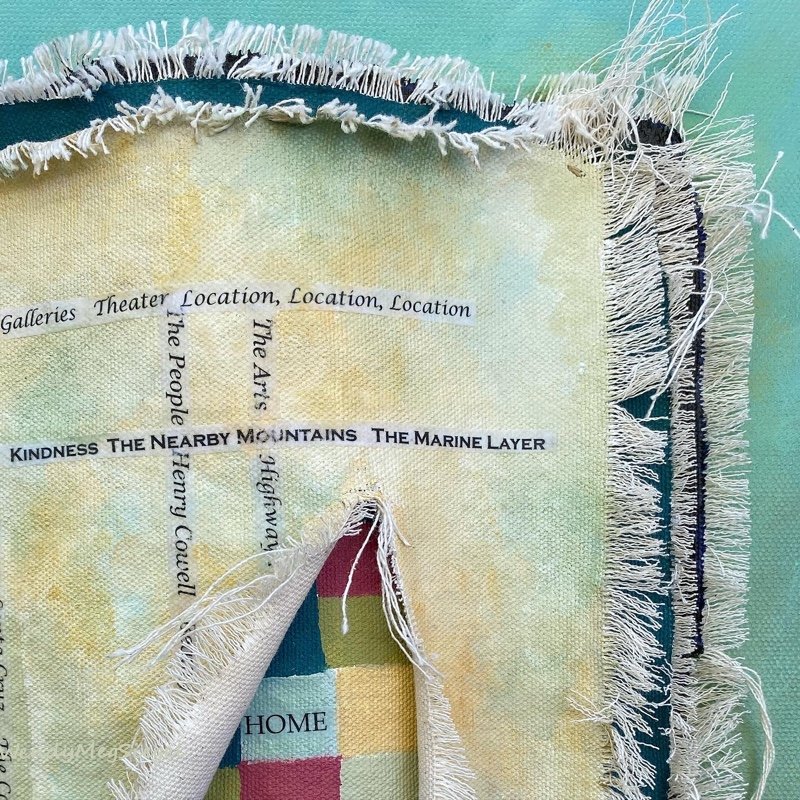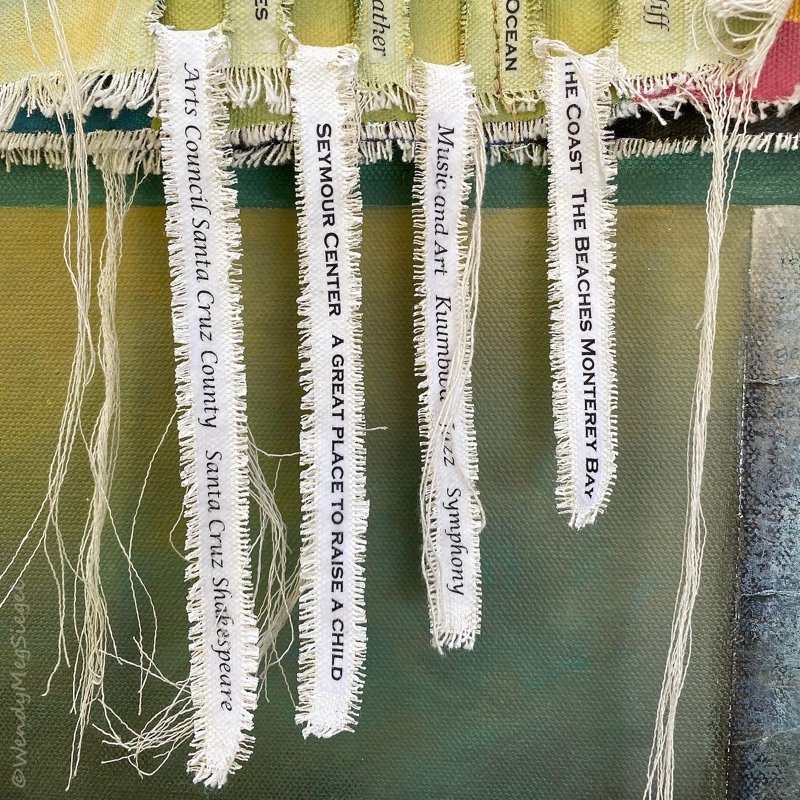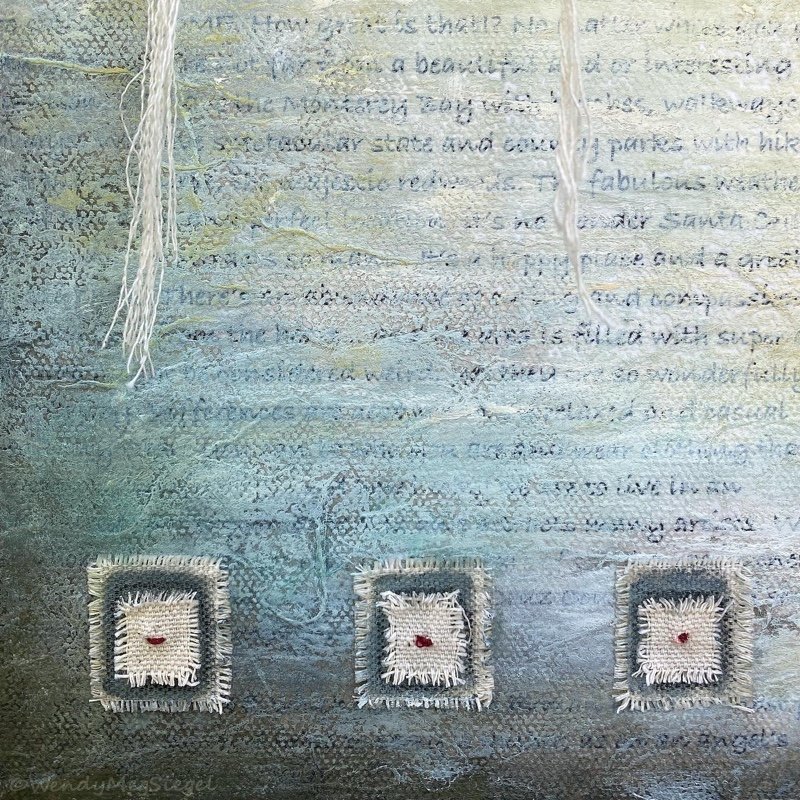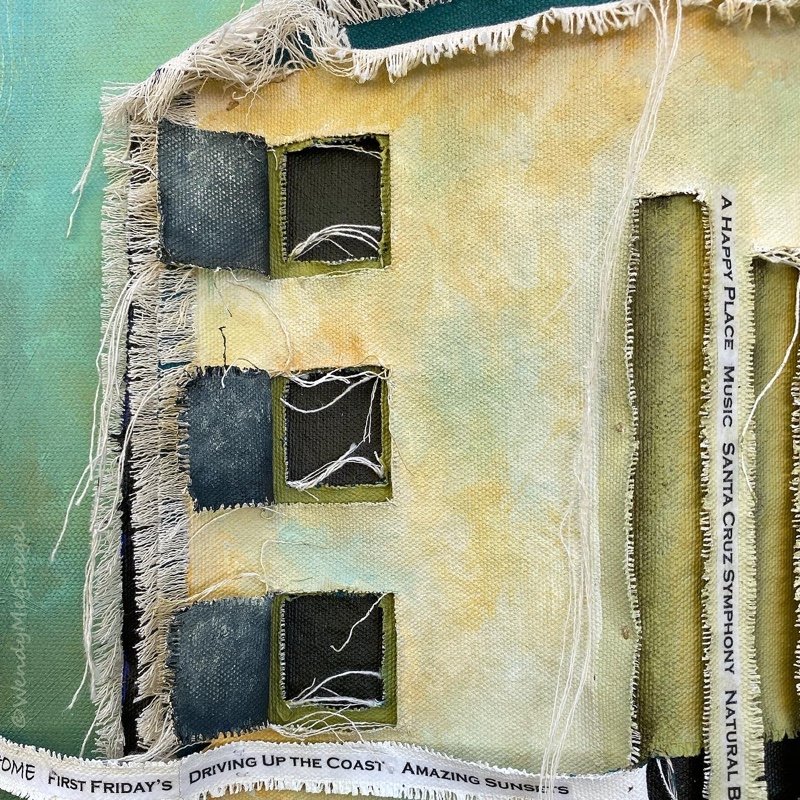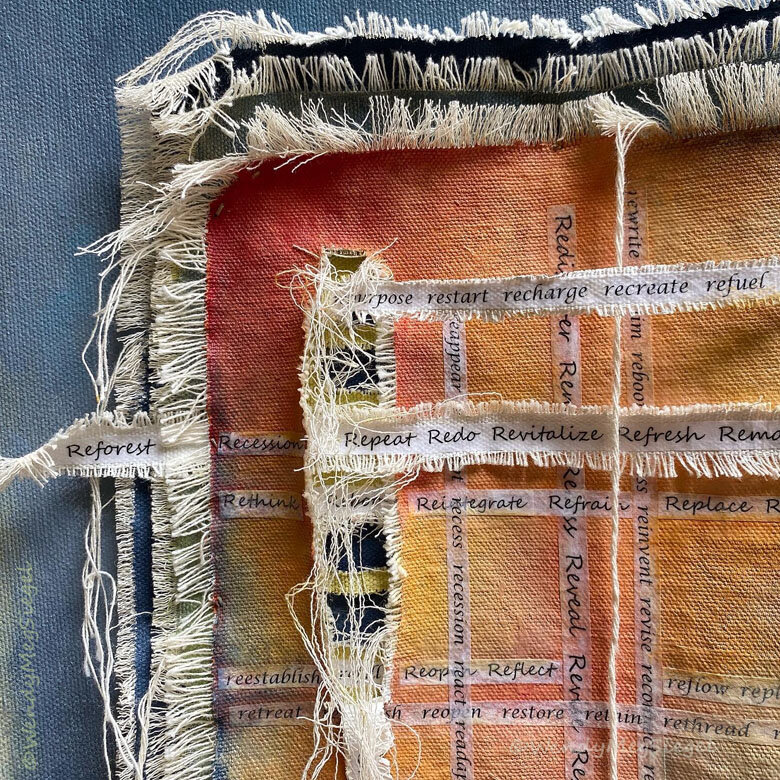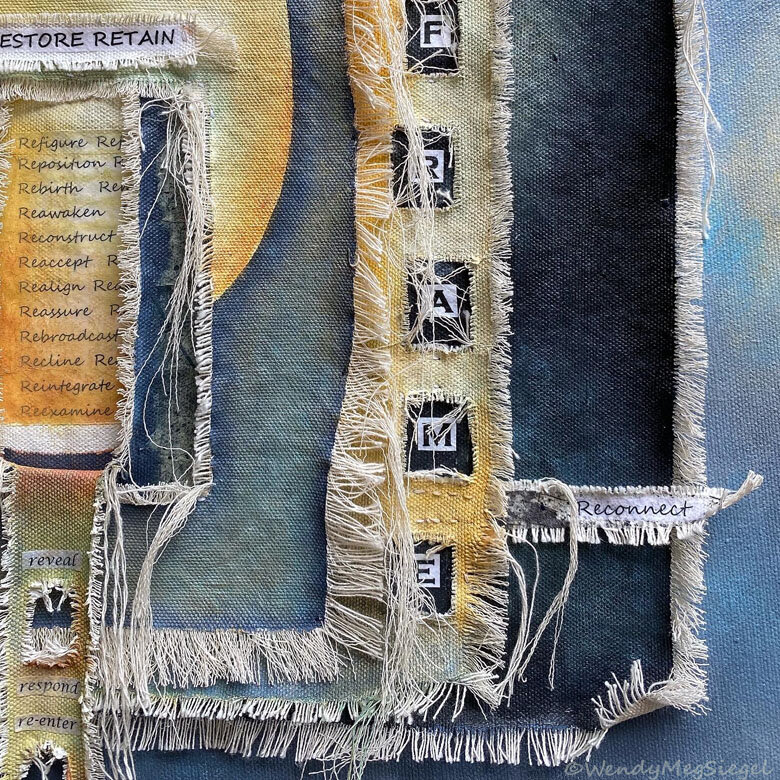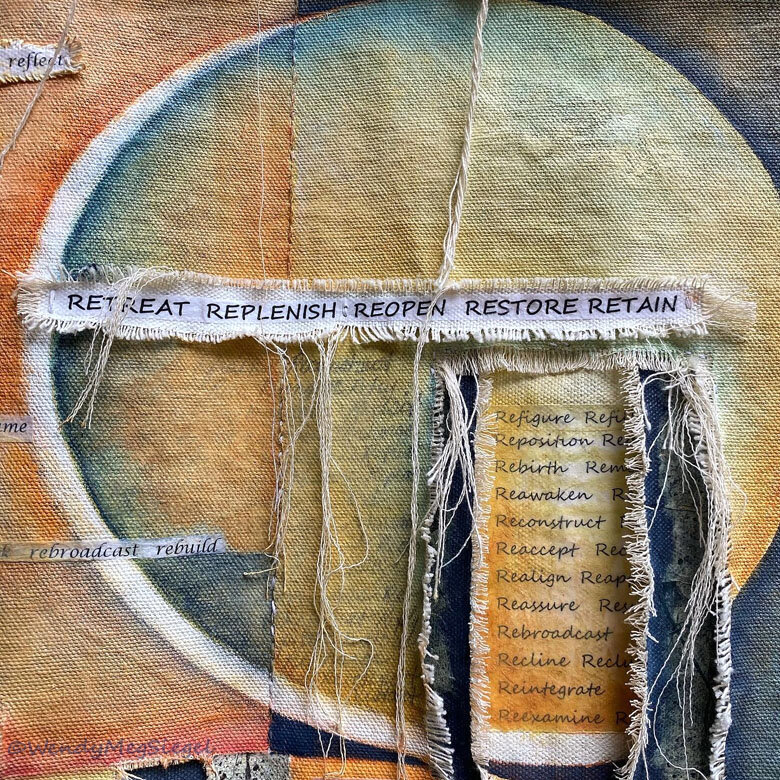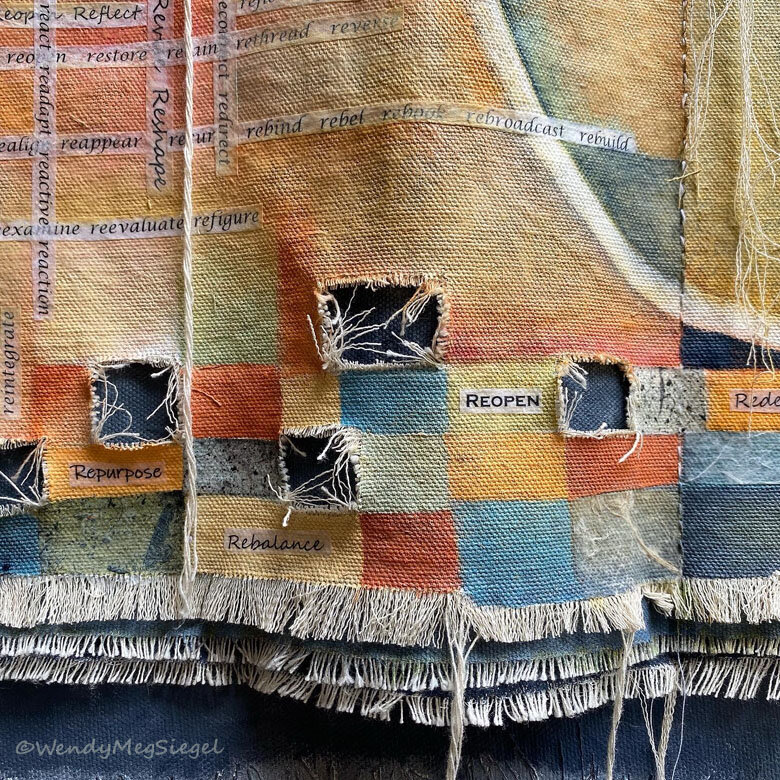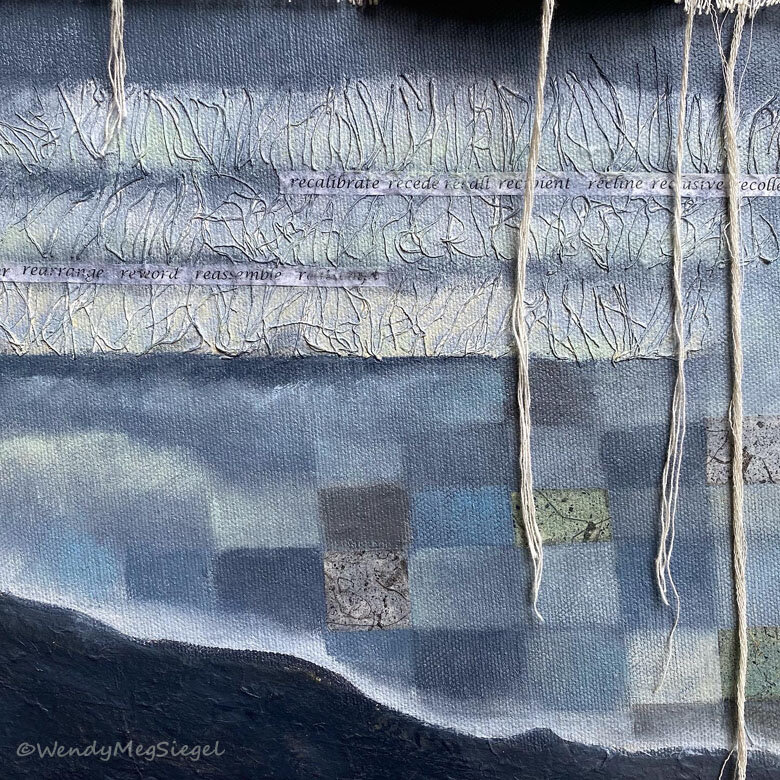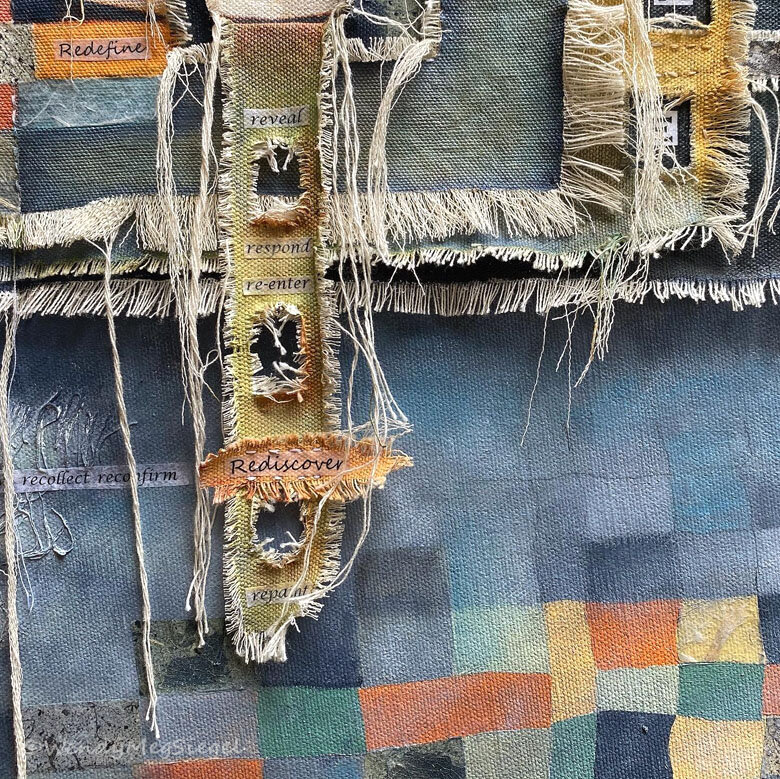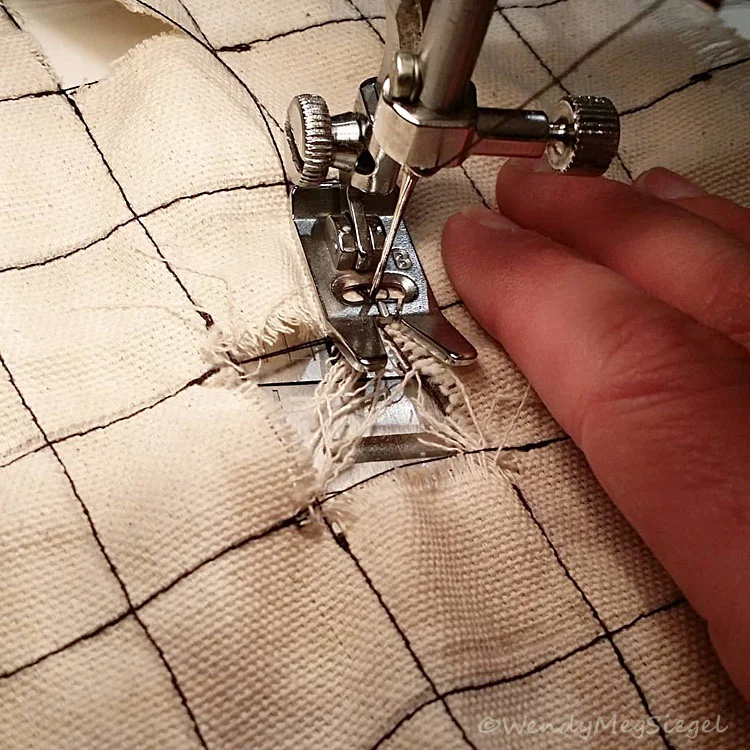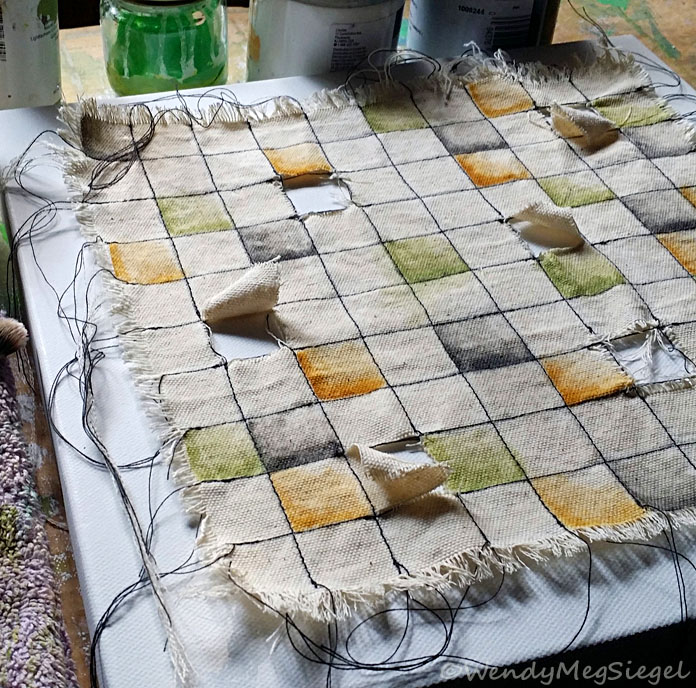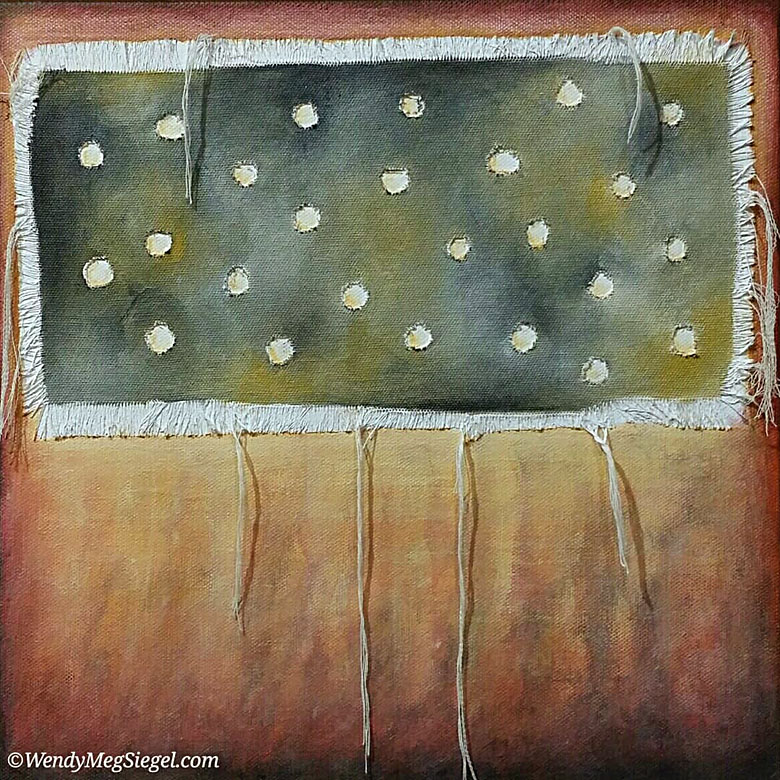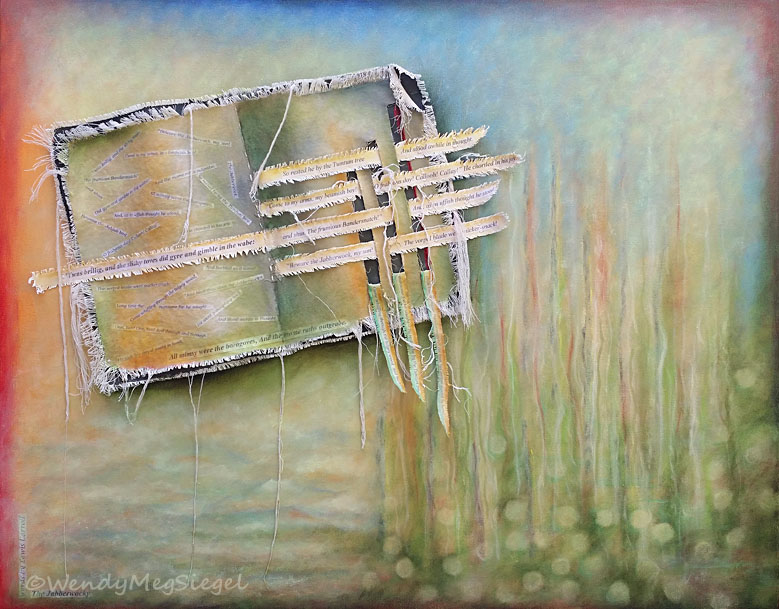The Development Stage…
The middle stages in developing a painting primarily involve adding paint, creating the text to be included, making any revisions in the prepared cloth pieces, and considering any other elements I might want to add to the painting.
I can get lost in the joy of playing with paint on the stretched canvas… adding colors, lightening areas, darkening others, thinking of how I want the background to show up around the cloth elements. In some paintings I take my time with this painting stage, just to continue enjoying the process.
Once I feel clearer about how the cloth pieces will fit within the whole, I give them their first layer of paint. There are times I prefer the raw look, and will choose to leave them coated but unpainted.
Although the background of stretched canvas and the layers of cloth develop separately, they keep coming together to help clarify what each one requires in order to fit within the whole. It’s during this stage when it becomes clear if the painting would be better served with a different cloth construction… and a new one is prepared.
Up until this point I’ve considered the words I’d like to include in the painting. The concept and meaning behind the painting has developed within my mind and I am ready to produce the text in different sizes and sometimes in a variety of fonts to be printed. The placement of text on the painting becomes a super enjoyable game. Since I print more text than I will use, I have a multitude of choices as I move the strips of words from place to place. Decisions on the placement of text may lead to adding new layers of cloth to house the text.
More to come. This is part 3 of a 4 part series.
Next up… Putting the Pieces Together - Part 4
You may also be interested in…
Before I Begin - Part 1
The Beginning Stage - Part 2


